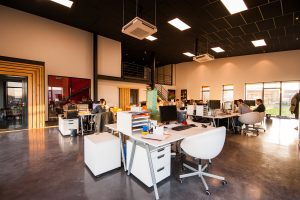 The modern office setting has undergone significant transformation over the last two decades. The early 2000s was when the cubicle lost its grip and made way for open floor plans, and office fit outs in Camberley or Leeds alike. In 2015, foosball and ping pong tables become one of the trendy pastime engagements in workplaces. The trends come and go, but the office environment still remains a space where employees feel welcome their health and wellbeing are upheld.
The modern office setting has undergone significant transformation over the last two decades. The early 2000s was when the cubicle lost its grip and made way for open floor plans, and office fit outs in Camberley or Leeds alike. In 2015, foosball and ping pong tables become one of the trendy pastime engagements in workplaces. The trends come and go, but the office environment still remains a space where employees feel welcome their health and wellbeing are upheld.
The workspace design in one of the top elements that govern the acceptable office setting. It should be a design that makes the staff feel less stressful. Moreover, it needs to be an atmosphere that encourages productivity. In essence, this points toward the need for employers to consider and prioritise the physical work setting for their workers.
No employee wants to work in a dirty and stressful setting; they all prefer a clean, organised and healthy environment. This is according to a report from the Fellowes Workplace Wellness Trend Publication. Below are some interesting facts.
- Currently, 87% of employees would like their employers to provider healthier work settings and benefits. Some of the things they would like to see include company fitness benefits, healthy lunch options, wellness rooms, and ergonomic office furniture.
- Interestingly, the new breed of companies is less likely to hesitate to provide in-office benefits such as sit-stand desk if their employees request for such things. As such, the workers in such businesses are 34% less likely consider working elsewhere.
- 93% of employees working in the tech sector said they would not leave a company that providers healthier work environments and better health benefits, with things such as company fitness benefits, healthy lunch options, wellness rooms, and ergonomic office furniture.
Many businesses have an open-plan office setup, which is a fantastic workplace design. However, its implementation should be done correctly so that is fosters employee happiness and productivity. Such a layout can include option such as quiet rooms for mediation, private areas for taking personal calls, and collaboration spaces where the workers can gather and share ideas about their work. Below are some of the elements that employers need to consider when creating healthier workplace environments for their staff.
- Air
The quality of the indoor air in the office can have a significant impact on the health and productivity of the staff. According to the World Green Building Council, there is an increased productivity of about 11% in an office environment that has fresh air.
- Water
Water is necessary for a healthy function of the body. It is essential for every aspect of how our body functions, from energy products to sleep quality as well as the ability to have clarity of the mind so that we can focus better and be alert. In a such a state of wellness, we are able to be more productive at the workplace.
- Nourishment
You are what you eat; this is statement that holds its weight in gold when it comes to our health and wellbeing. Therefore, what your employees eats fuels the day’s performance levels in the office. Therefore, you should advocate for a healthy food culture that encourage the staff to eat nutritious, balanced diets that will help keep them energised, focused and productive.
- Light
According to the Department of Design and Environmental Analysis at Cornell, workers seated within ten feet of a window are less likely to experience headaches, blurred vision, and eyestrain. As such, you should create an office setting that has sufficient natural and artificial lighting.
- Comfort
In as much as the office is a place of work, it also should be an area of comfort. For this, companies should invest in ergonomic furniture that will help eliminate MSDs (Musculoskeletal Disorders), lower muscle fatigue, and increase productivity. If the employees feel comfortable when working, then the business will have less cases of lost work time.


